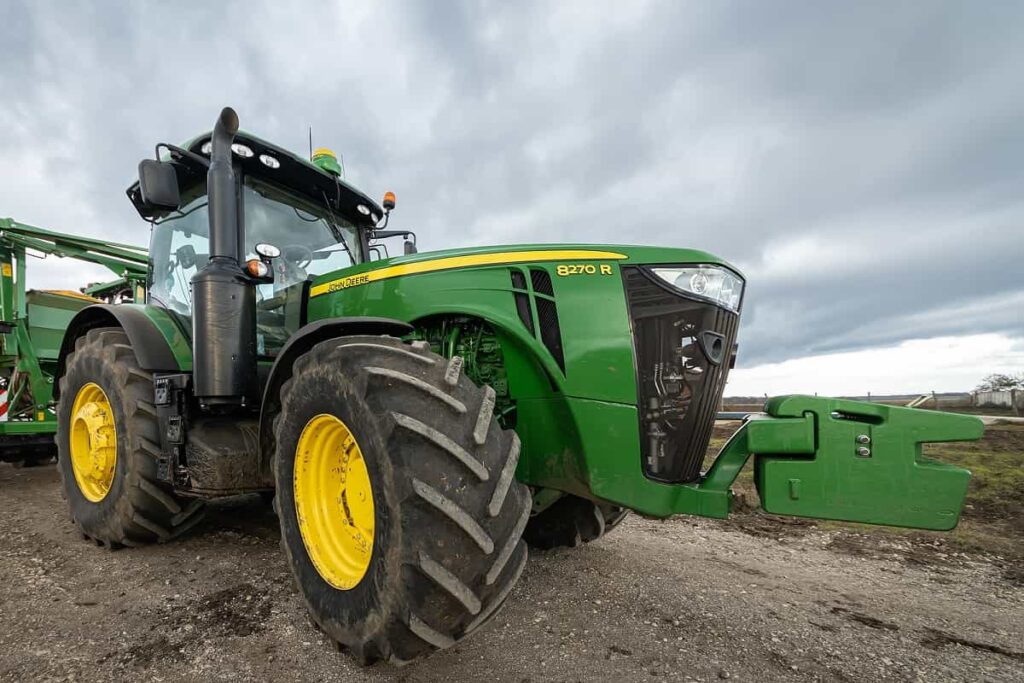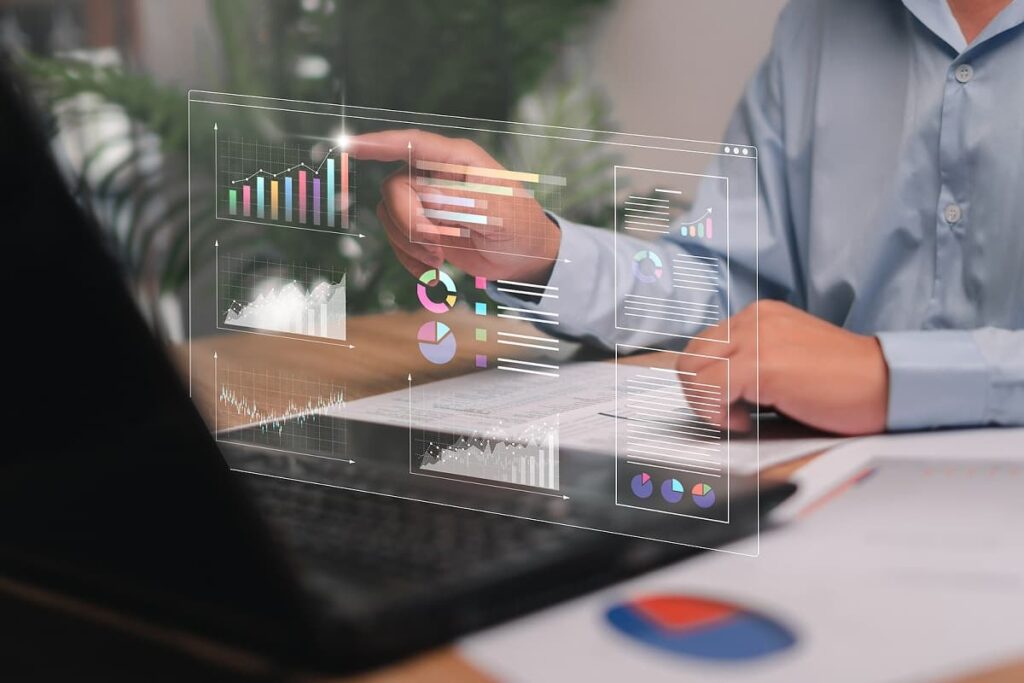Solving Indonesia’s Big “Big Data” Problem
Table of contents

If you look at how technologically mature countries are relative to their size, the world’s biggest country (China) is well on its way to becoming a tech superpower. The same can be said for the world’s third biggest country (United States). The second biggest country (India) has its problems, but for the most part, it’s pretty obvious that they’re a contender. The fourth biggest country (Indonesia) is where everything drops off. Most non-Indonesians probably can’t name a single Indonesian company. Here are the top 10 companies in Indonesia according to the iShares MSCI Indonesia ETF:

Not many familiar names there except for Unilever. That’s all about to change though, as Indonesia is expected to become a much bigger player on the global stage, vaulting from the 16th biggest economy today, to the 7th largest economy by 2030, putting it ahead of the developed nations of Germany and the U.K., according to a report by McKinsey Global Institute. The end result will be a consuming class stronger than in any economy of the world apart from China and India.

Land in Jakarta and you will immediately become intimately familiar with GO-JEK and Grab. After that, you’ll need to dig much deeper to find out what’s going on here. Everything isn’t as it seems, and the world is only now starting to realize the potential of Indonesia.
We recently wrote about the top-11 AI startups in Indonesia, and the fact that we came across so many Natural Language Processing (NLP) companies focused on Bahasa Indonesia was a hint that the world’s biggest tech companies haven’t been giving Indonesia that attention it deserves. We sat down to talk with Regi Wahyu (Co-Founder and CEO of Dattabot) and Imron Zuhri (Co-Founder and CTO of Dattabot) for a few hours and the story they told us was fascinating.
Once Upon a Time, Everything Was Dark
Indonesia has a big data problem. No, not a “big data” problem, a big “big data” problem. The problem is not only that they don’t have data (big or small), it’s that the data they have has little integrity. Indonesia is living in a dark world, where all the data exists on paper and offline. That’s how Dattabot came into existence. The company started scanning offline data and accumulating it.
Indonesia may appear to be digitally advanced but that’s hardly the case. Supposedly there are over 200 million smartphones, but the number doesn’t take into account how many people have multiple phones. There is 80% cell phone coverage, but that’s only for major population centers. Something as knowing how many people there are is a chore. In Jakarta, ask a local government office how many people there are in a district and it will take them days to answer the question. Ask the government how many people there are in the country, and they will ask you “which one of the six data sources do you want to use?” Each data source has a different answer. For the people who live in Indonesia, there is no single ID that exists which can be guaranteed as unique. It’s a giant mess.
Dattabot realized that data integrity was lacking and that corporations would have an appetite for data that was cleansed and contained some level of accuracy. The first project they took on was for an FMCG firm that had three databases of local data that weren’t connected. For example, the store “7 eleven” was written “7 11” in the accounting database, “Seven Eleven” in the inventory database, and any old way in the CRM system. A data warehouse would be ideal, but their client didn’t want to make that sort of investment. That’s where the AI algorithms come into play.
Big Data vs. Data Warehouses
We recently wrote an article on Big Data vs. Data Warehouses, What’s the Difference? In that article, we touched on how expensive and complicated data warehouses can be. Turns out that you don’t necessarily need to build a data warehouse when intelligent AI algorithms can figure out how the data is related and then extrapolate insights. In fact, Dattabot ran into a problem when trying to convince customers to use machine learning instead of data warehouses since the customer was immediately suspicious of the value proposition. Not only could machine learning do the tasks cheaper, it could do the tasks better. That’s a tough sell for skeptics like us, but fortunately, people kept buying. The next customer was a telecommunications firm that had a problem with shrinking data.
The way that communication has changed may not be so obvious but the effects are drastic. Customers are using SMS less and less because of the growing popularity of messaging apps. Nobody is calling, nobody is texting, and when they do use the Internet, telecommunications companies can’t actually see what they are doing because of something called HTTPS. Long story short, pretty much all websites have moved to using secure communication. (We actually get penalized for linking to websites that don’t use HTTPS.) Then there’s the fact that 90% of customers are pre-paid. How the heck can you establish long-term customer profiles when everyone uses pay-as-you-go? Again, the answer was to use machine learning.
The Biggest Opportunity Yet
Along their journey, Dattabot learned two valuable lessons. The first was that offline data becomes very valuable when digitized at a granular level. The second is that having a platform that does data cleansing and data integration is critical to any big data effort. That’s when the company decided to go to the bottom of the pyramid where the data is the darkest – the more than 40 million farmers in Indonesia – and HARA was born.

HARA (that’s their new AgTech vertical) started out by establishing a joint venture with a corporate farming operation that had a bit of structure around it. In other words, the farms had a record of land rights, a record of who farmed what, and some basic semblance of data. They then started to gather data, and initially started using drones from a company we’ve talked about before called PrecisionHawk. What they realized is that undulating landscapes meant that they needed to have up to 5 operators daisy-chained to navigate the drones, and after smashing one to smithereens they opted for a different approach. A company called Planet Labs started selling them satellite imaging data that works equally well. They then completed the pilot and realized they a had a winner.
Jobs for Anyone with a Mobile Phone
The system works like this. A group of people called “Field Agents” go out and meet with farmers. In their initial role, Field Agents will serve as data collectors and map out the agricultural potential in their village. For example, they will check the familial relations and ID’s of local farmers, examine the yields of their crops, and track the market prices. In exchange for providing this information, each farmer is given the equivalent of a Starbucks stamps card as seen in the below photo:

Every time the farmer provides data, they get stamps. Once the card is full of stamps, they can then go redeem it for things like fertilizer and seeds. (They say wives love this because then the husbands won’t go squandering the extra income.) In this scenario, HARA has partnered with Pundi X where their XPOS platform will be used by farmers to collect and exchange these incentives. The XPOS terminals will be deployed initially across Indonesian villages at an approximate density of one device for every 200 farmers in participating areas.


There is also another step in the process that allows for “data auditors” to check the data, giving it an increased accuracy rating. Think of it like the Amazon rating system. A farmer who says he owns the land (1 star) versus a farmer who has the paper deed for the land (2 stars) versus a farmer who has the deed which has been seen by both the field agent and the data auditor (3 stars). In this manner, the data can be ranked based on quality and sold at different price points.
What the Data is Used For
HARA emphasized how this business model allows the farmers to retain ownership of their data. HARA doesn’t own the data, the farmer does. Indonesia has three growing seasons per year, and each harvest provides additional information over time about cultivation behaviors. At least one commercial entity has signed up to pay for access to the data, and there’s another benefit that might not be so obvious. Once a farmer’s land ownership has been established, banks can begin offering loans which they have already started doing with 100% repayment so far. That’s because farmers are doing much better with a bit of basic education on best practices. In one experiment with more than 1,300 farmers, they managed to increase crop yield by 80%, while reducing the use of farm inputs (fertilizers, etc.) by 50%.
Using the Blockchain
It’s interesting to note how HARA is using blockchain technology to solve a problem. When they initially set out to reward farmers, they couldn’t exactly transfer money to bank accounts (they don’t have any, remember?). They also couldn’t use other methods like coupons because the fee for each transaction actually exceeded the payment value. So, they turned to blockchain technology. Not only is it cheap to use, it also ensures that there is authenticity and traceability. When it comes to awareness of the underlying technology, some farmers show an interest, so HARA gives a brief of blockchain understanding to the farmers using some very clever metaphors based on Islamic beliefs – like two angels called Raqib and Atid. No matter what someone else tells the angels, they are infallible because they see and record everything of what humans do everyday. That’s exactly how the blockchain works.
Conclusion
There is an incredible amount of waste in developed market farming with the World Bank estimating losses at up to 30% of output. We’ve been talking a lot lately about how precision agriculture can help feed all the people that will be coming online in the next few decades as global population soars. The ability to capture big agtech data at the most granular levels will be key in helping to start solving some of the problems that exist in rural farming, feeding more people as a result, giving the farmers a better life, and lining investors’ wallets with cash.
Sign up to our newsletter to get more of our great research delivered straight to your inbox!
Nanalyze Weekly includes useful insights written by our team of underpaid MBAs, research on new disruptive technology stocks flying under the radar, and summaries of our recent research. Always 100% free.














